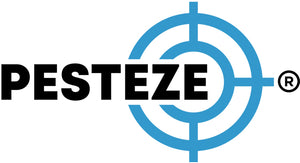THE RISKS OF FEEDING WILD BIRDS IN URBAN AREAS

THE RISKS OF FEEDING WILD BIRDS IN URBAN AREAS
SUMMARY
This guide explains the often-overlooked risks of feeding wild birds in cities and suburbs. It explores how feeding can cause overcrowding, disease spread, and dependence, while offering tips for supporting bird populations safely and responsibly.
FEATURES
-
Disease Transmission: Shared feeders spread infections like salmonella.
-
Overcrowding: Too many birds in one area disrupt natural balance.
-
Predator Attraction: Feeders can draw cats, hawks, or rats.
-
Dependency Issues: Birds may rely on human-provided food.
-
Environmental Impact: Uneaten food and droppings pollute surroundings.
-
Safer Alternatives: Plant native flora and provide water sources.
GUIDE DESCRIPTION
Feeding wild birds can feel like a kind gesture, but in urban areas, it can unintentionally create more harm than good. While watching birds gather outside your window may be heartwarming, over time, routine feeding can lead to serious ecological and health consequences.
The first major issue is disease transmission. Bird feeders concentrate large numbers of birds in small areas, increasing the likelihood of spreading bacterial and viral infections such as salmonella, avian pox, and trichomoniasis. Shared feeding surfaces and contaminated droppings allow these pathogens to pass easily between birds—and even to humans in rare cases. Without frequent cleaning, feeders quickly become hazardous.
Feeding also causes overcrowding. Normally, birds disperse across a wide area in search of natural food sources. But when easy food is available, populations can swell unnaturally, putting stress on local ecosystems. Overcrowded birds may fight for dominance, abandon natural foraging behaviors, and struggle when food handouts stop.
Another issue is predator attraction. Concentrated feeding sites often lure not just birds, but also predators like domestic cats, hawks, raccoons, and rats. These animals can injure or kill birds, steal eggs, or invade nearby homes. Uneaten seed and food scraps also attract pests and contribute to urban litter problems.
Dependency is another subtle risk. Birds that become accustomed to being fed may lose their natural foraging instincts or fail to migrate on time. This dependency can reduce their long-term survival, especially when food supplies are inconsistent or abruptly removed.
The environmental impact is often overlooked as well. Accumulated droppings under feeders can damage vegetation, spread disease, and alter soil chemistry. Moldy or spoiled seed can also sicken wildlife and pollute nearby water sources.
To support urban bird populations safely, focus on natural alternatives. Plant native shrubs, trees, and flowers that produce seeds and berries throughout the year. Provide a birdbath or shallow water source for hydration and bathing. These sustainable methods encourage birds to behave naturally while still benefiting from human stewardship.
Ultimately, helping birds means respecting their ecological needs. By shifting from artificial feeding to habitat enrichment, you can promote healthier, self-sustaining bird populations and contribute positively to your local ecosystem.
- Saneeth Thota


Comments 0